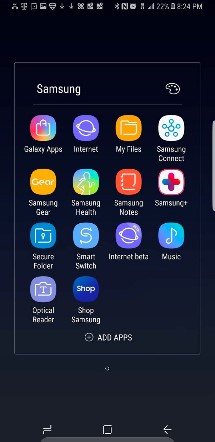The jury is still out if a Super App could succeed in the U.S. like it has in other countries. The idea of it certainly makes sense - put everything people need to do in one place. In China, WeChat has successfully created a market where 1.2 billion users can do almost anything out of the app: message each other, send and receive money, take out a loan, play games, even date (and divorce) people!
Facebook, Google, and Amazon would seem like the most likely companies to succeed in building a Super App - and maybe you could consider them a mini-version already with all their different owned and operated properties. Facebook now offers ecommerce, neighborhood marketplaces, event listings, messaging, and more. Just last summer, Head of Instagram Adam Mosseri said they are no longer a photo sharing app. It’s all about live updates, shopping, messaging, and video.
Given its benefits, it’s no surprise the idea of a Super App gained traction quickly. The more users can do within one app, the more likely they are to reward that app with Home Screen status - the 20 to 30 spots that enjoy prime real estate on a phone.
Everything super always has a catch
But there is one fundamental change they would need to make - to eschew advertising in favor of deep integrations. The reason for this is the more services that you have on your app, the less those services would want competing apps being touted on the same platform.
As a case in point, WeChat works in China because it takes a cut of the profits from its integrations. Didi, a ride-sharing service similar to Uber, pays WeChat a “tax” to be part of its Super App. In return, WeChat solely uses Didi for users needing taxis. The end result has helped Didi become the dominant ride-sharing app in China.
Now, for example, let’s suppose Facebook agreed to something similar and integrated Uber into WhatsApp or Instagram as part of a Super App. If you’re Uber, you’d want them to promise not to promote Lyft or any other competing apps on their properties. And when you’re a company like Facebook, who is dominant because of their advertising platform, it would be a tough road to start limiting that business model.
So while the Super App in the U.S. might have some hurdles, there is still a way that we can have everything we need in the palm of our hand - literally!
What a shopping mall and smartphone have in common
Remember the shopping mall? If it’s been a while, let me jog your memory.
Originally, shopping malls housed a number of retail stores under one roof. Then, they began to evolve. Shopping malls grew to include arcades, food courts, movie theaters, banks, and more. These sprawling marketplaces have one goal in mind: once people go through the revolving doors, increase their time and dollars spent.
The formula works. When you’re in a shopping mall, a haze comes over you. You may have gone in to pick up one thing, but before you know it, you’re grabbing something to eat, playing a game, or even watching a flick! It’s so convenient, you don’t realize how much time (and dollars) you’re spending.
That same magic exists on your smartphone. Once we enter our smartphone, it becomes the ultimate time waster. It has different stores (or apps) for different purposes. There’s retail apps that act like stores. Games that are arcades. Delivery apps that are like food courts, Streaming apps that are theaters. And of course, our banking apps when we need to pay for anything.
But, why do users even need to click on an app? Since the apps are already like individual stores in our handheld shopping malls, there’s no reason for any of them to become a Super App when we can just have a Super Phone.
The super phone sort of exists already
Amidst all the hype around Super Apps, you may have missed that the Super Phone might already be being built. For iPhone users, consider all the things you already do on your phone:
- Pay for anything you want with Apple Pay
- Read the latest headlines with Apple News
- Listen to music on Apple Music
- Watch TV and movies with Apple TV
- Search the web with Safari
- Play games with Apple Arcade
- Get where you need to go with Apple Maps
And if you think you need to click on an app to do any of these things, think again. Siri will suggest what you want to do based on your location. News will feed you the content you like in different places (just swipe right!). Ask Siri a question and Safari will pop up a web search response. You can pay for anything directly from Apple Wallet without ever opening the app, or ask Siri to play your favorite song without ever clicking on Apple Music.
And Android users have similar integrations as well, allowing the device to integrate with Spotify, Google Sheets, Amazon Alexa and even location services. Users can have their Spotify begin playing as soon as they connect to a bluetooth device. They can download all their Google Pay purchases in Google Sheets. They can ask their Amazon Alexa to immediately start playing music on their phones. And when someone calls, you can see where they are on Google Maps. Samsung even created a separate network of Samsung apps that would integrate together as well.

There’s a reason that Apple and Android have created all these deep integrations. So you spend as much time and dollars as you can in their properties before you even have a chance to find that app (or Super App) on your home screen.
All Carriers and OEMs have the ability to build the same network of information, entertainment, and services as these phones, and totally remove the need to go into multiple apps at all - not even a Super App. While Apple might have some terms that would make it harder for carriers to build a Super Phone (we did find that the iOS version of WeChat in China is scaled down), there definitely seems to be a clear path to a Super Phone on Android.
Are consumers ready for a super phone?
Absolutely. For one, Apple (and Google as well) have already made strides in that direction. And consider this: Carriers and OEMs already provide a product that people consider essential.
People are more frequently than ever opening their phones without knowing what they want. On average, US consumers are opening their phones 344 times a day! Which means they are, literally, potentially hundreds of opportunities where consumers are looking for something - ANYTHING - to engage them.
And while they certainly can browse through their clutter of apps, it makes a lot more sense to have their favorite distractions easily available to them as soon as they open their phones.
By adopting the Super App philosophy, carriers and OEMs can become lifestyle devices. Deliver all those same capabilities, from a Super Phone, and they can become as entrenched in their users’ lives. Wouldn’t that be Super?






















